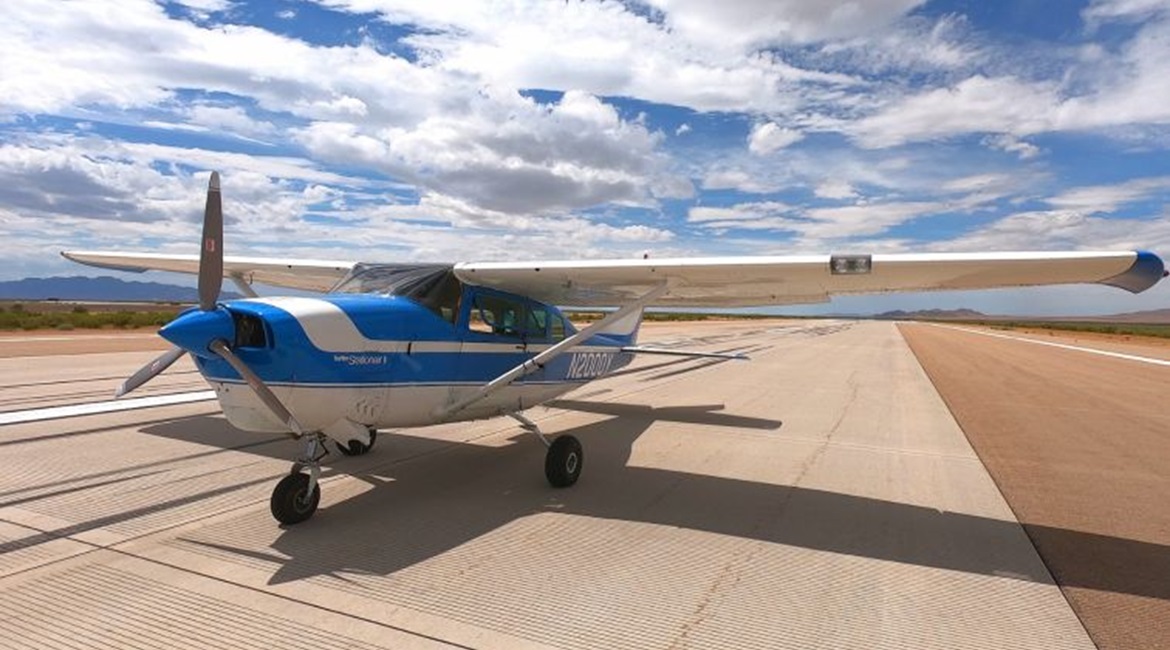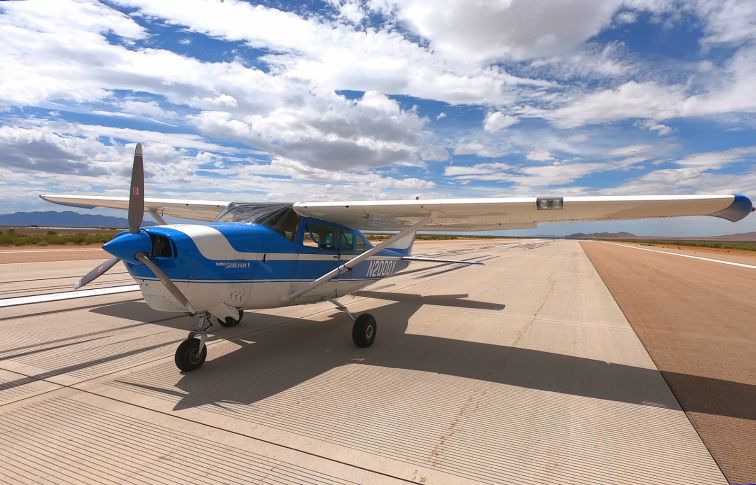
The US Air Force Research Laboratory (AFRL) and DZYNE Technologies on 9 August performed a two-hour initial flight of the Robotic Pilot Unmanned Conversion Program (ROBOpilot), according to a 15 August AFRL statement.
Dr Alok Das, AFRL Center for Rapid Innovation senior scientist, said in the AFRL statement that the ROBOpilot achieves the ability to rapidly and affordably convert a general aviation aircraft such as a Cessna or a Piper into an unmanned aerial vehicle (UAV), fly a mission autonomously, and then return back to its original piloted configuration. This is all without making permanent modifications to the aircraft.
A cockpit view of the ROBOpilot, which attaches to seat rails and requires no permanent modifications to the aircraft. (US Air Force)
For example, the system grabs the yoke, pushes on the rudders and brakes, controls the throttle, flips the appropriate switches, and reads the dashboard gauges the same way a pilot does. Simultaneously, the system uses sensors, such as a Global Positioning System (GPS) and an internal measurement unit (IMU), for situational awareness and information gathering. A computer analyses these details to make decisions on how to best control the flight.
The ROBOpilot also has a simple installation process. Users remove the pilot’s seat and install a frame in its place, which contains all the equipment necessary to control the aircraft including actuators, electronics, cameras, power systems, and a robotic arm.

Looking to read the full article?
Gain unlimited access to Janes news and more...






